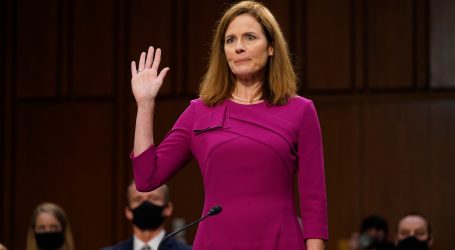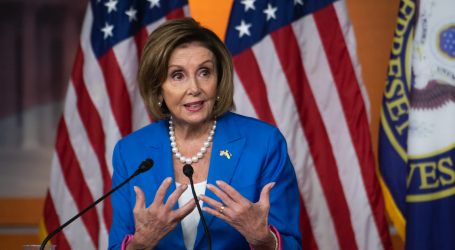The Green New Deal Is Out—But It’s Still Kind of Hazy
Looking for news you can trust?Subscribe to our free newsletters.
The Green New Deal is out. It’s a “sense of Congress” resolution, not actual legislation, so it doesn’t contain the kind of detail you’d find in a real bill. Section 2 contains the meat of the resolution:
(A) building resiliency against climate change-related disasters, such as extreme weather, including by leveraging funding and providing investments for community-defined projects and strategies;
(B) repairing and upgrading the infrastructure in the United States, including—(i) by eliminating pollution and greenhouse gas emissions as much as technologically feasible; (ii) by guaranteeing universal access to clean water; (iii) by reducing the risks posed by climate impacts; and (iv) by ensuring that any infrastructure bill considered by Congress addresses climate change;
(C) meeting 100 percent of the power demand in the United States through clean, renewable, and zero-emission energy sources, including—(i) by dramatically expanding and upgrading renewable power sources; and (ii) by deploying new capacity;
(D) building or upgrading to energy-efficient, distributed, and “smart” power grids, and ensuring affordable access to electricity;
(E) through (H) achieve maximum energy efficiency in buildings, manufacturing, agriculture, and transportation;
(I) mitigating and managing the long-term adverse health, economic, and other effects of pollution and climate change, including by providing funding for community-defined projects and strategies;
(J) removing greenhouse gases from the atmosphere and reducing pollution by restoring natural ecosystems through proven low-tech solutions that increase soil carbon storage, such as land preservation and afforestation;
(K) restoring and protecting threatened, endangered, and fragile ecosystems through locally appropriate and science-based projects that enhance biodiversity and support climate resiliency;
(L) cleaning up existing hazardous waste and abandoned sites, ensuring economic development and sustainability on those sites;
(M) identifying other emission and pollution sources and creating solutions to remove them; and
(N) promoting the international exchange of technology, expertise, products, funding, and services, with the aim of making the United States the international leader on climate action, and to help other countries achieve a Green New Deal.
I understand that this is primarily an aspirational document, but I’m still disappointed that it doesn’t focus more strongly, and in more detail, on climate change, rather than encompassing every possible thing that can go under the rubric of “green.” Even for a working document like this, I’d like to see:
A goal for when we’ll get to 100 percent clean power generation.
A set of goals for specific kinds of power generation like wind and solar.
At least a mention of funding for science efforts to develop new methods of clean power.
A nod toward carbon taxes or cap-and-trade.
I suppose the goal here is to propose something vague enough that no one will object to it. (No one who’s a Democrat, anyway.) Perhaps this is the right way to go, but I hope it’s not so fuzzy that it turns into a meaningless document that everyone can cosponsor in order to feel good about themselves, but without really making any real commitment to doing anything.





